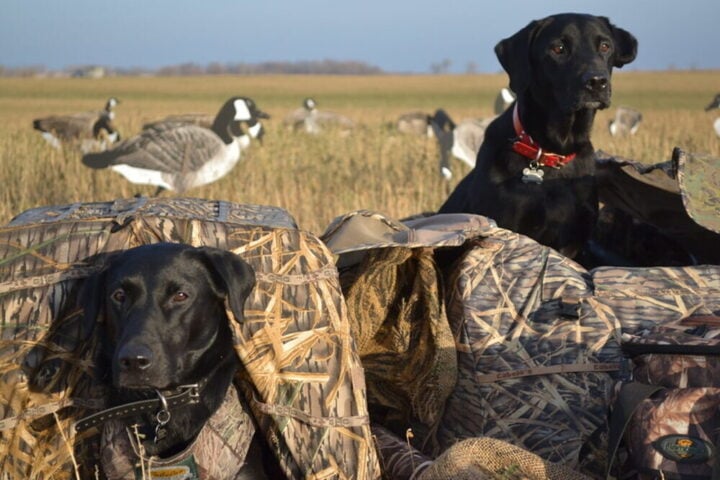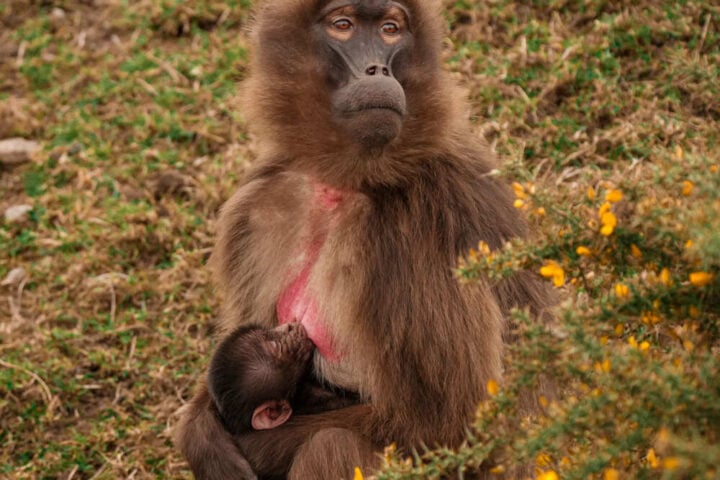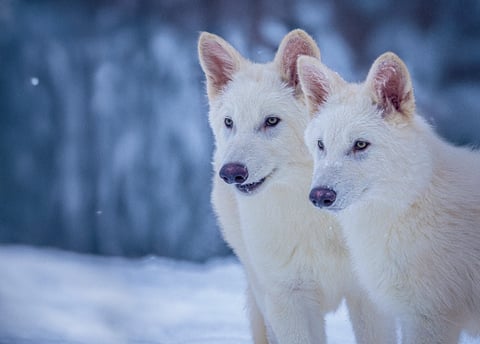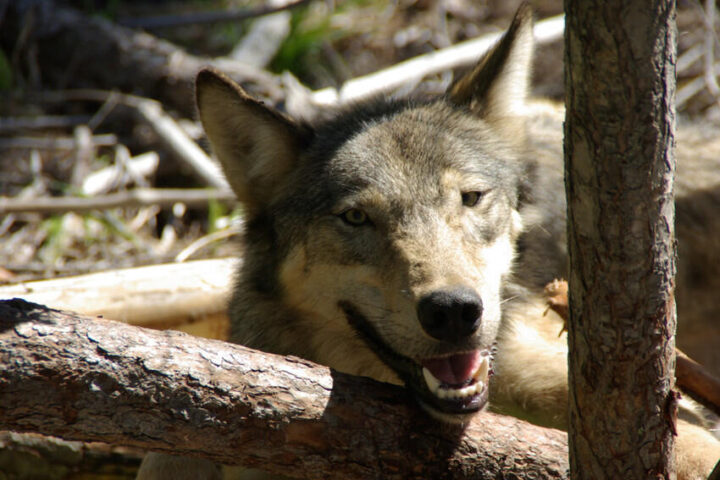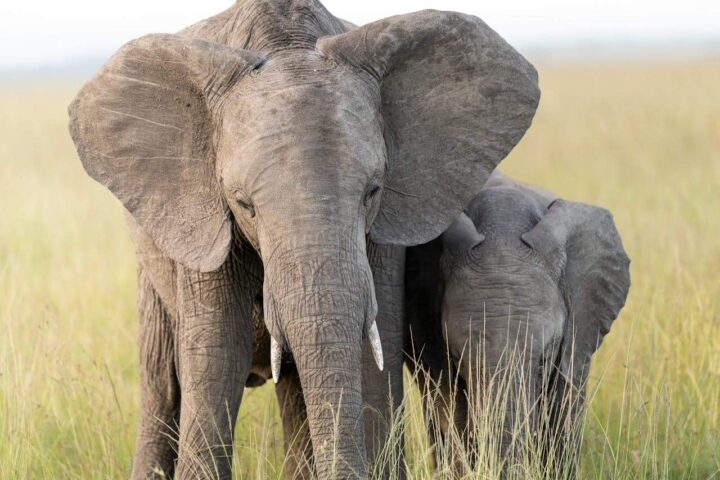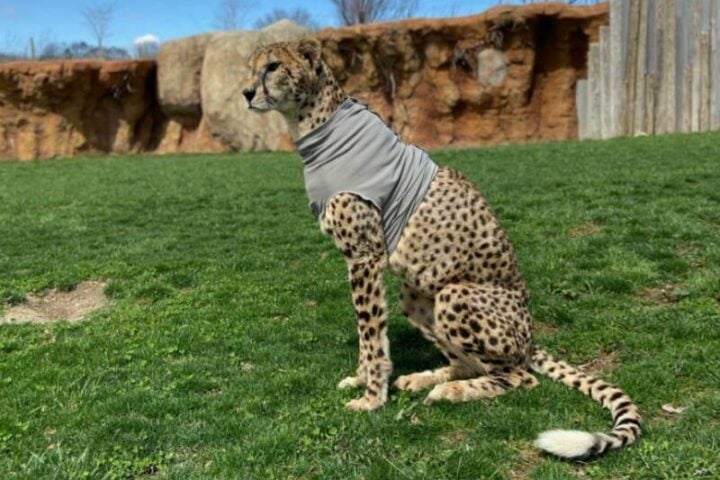Think of lions as the ultimate hunting machines in nature’s food web. These massive cats (Panthera leo) sit right at the top of nature’s supper pyramid in Africa and Asia, but their reign as supreme predators faces modern challenges. Scientists tracking these apex hunters have uncovered fascinating details about their eating habits.
Calorie Counter: A Lion’s Daily Energy Budget
When it comes to daily meals, lions need a seriously hefty amount of meat to keep their engines running. Male lions are like furry furnaces – they burn through 5-10 kg of meat every day. Female lions are slightly more efficient, needing 4-8 kg daily. They can often go for days uneaten and then males can gorge over 43 kgs in one go, while females can eat 25kgs. Sometimes these big cats can really pack it in – researchers have watched them devour up to 15.3% of their own body weight in a single feast!
How many calories do male and female lions need per day? Each hunting sprint burns up numerous calories – that’s like a human running a marathon! But when they make a kill, lions hit the caloric jackpot, pulling in approximately 9,800 ± 1,200 calories per meal.
The cats’ bodies are basically programmed for this feast-or-famine lifestyle. They’re perfectly evolved eating machines – able to go from couch potato to Olympic sprinter in seconds when prey appears in the wild. And every bit of that massive calorie intake goes to maintaining their status as the savanna’s top predators.
When Lions Attack: The Science of Perfect Timing
Let’s peek into a lion’s workday – these apex predators aren’t exactly putting in 9-to-5 shifts!
Clock-Watching Cat Style
- Prime hunting hours: 3-5 hours daily, usually when the sun’s playing peek-a-boo (dawn and dusk)
- Energy investment tracking shows these big cats work smart, not hard – they’ve mastered the art of energy-efficient hunting through millions of years of evolution
Hunting Playbook
Lions pack a triple-threat of hunting moves with individual speeds reaching upto 80kmh(50 mph):
- The sneak attack – classic stalking maneuvers
- The ambush – surprise party, lion style!
- The team takedown – pride power in action
Success By The Numbers
Think your job’s tough? Check out these workplace performance stats:
- Solo huntress: 15-25% success (like trying to catch a flying pizza)
- Girl gang (5-6 lionesses): 30-50% success (teamwork makes the dream work!)
- Male solo mission: 10-20% success (hey, at least they’re trying!)
- Mixed hunting party: 25-35% success rate (family business style)
Moonlight Mysteries
Some scientists think lions are better hunters during new moons – like having night vision goggles! But here’s the thing: we’re still collecting data on this lunar love affair. Researchers are split on whether it’s coincidence or strategy.
Dinner Time Details
- Mealtime can stretch from a quick 30-minute snack to an extended feast lasting hours
- Post-feast food coma: 18-24 hours (who hasn’t been there?)
- Survival mode: These cats can go 10-14 days without a meal when times are tough
Real Talk: What Makes or Breaks a Hunt
- Every pride’s got their own style – like regional cooking differences!
- Competition’s fierce – hyenas and cheetahs are always trying to crash the party
- Human neighbors can make hunting tricky – we’re not exactly making it easy for them to grocery shop
Additional Information:
For more in-depth information on lion behavior, you can refer to studies conducted by researchers like Dr. Craig Packer and his team at the University of Minnesota.
Built for the Hunt: Inside Nature’s Perfect Predator Machine
Anatomical adaptations support specific hunting strategies. Bite force measurements record reaching 1,000 psi pressure, enabling cervical dislocation of prey up to 1,200 kg. Muscle fiber analysis shows as we predict :
- Type IIb fast-twitch fiber concentration: 78% in shoulder muscles
- Anaerobic capacity: 3.8 times higher than other large felids
- Sprint velocity potential: 80 km/h maximum recorded
- Acceleration: 0-48 km/h in 2.1 seconds
Hunting biomechanics utilize precise attack patterns. We detail an estimated possibility:
- Initial stalk distance: 27-45 meters
- Sprint duration capability: 18-22 seconds
- Preferred attack angle: 27-32 degrees from prey’s shoulder
- Killing bite placement: 92% accuracy at cervical vertebrae C1-C3
- Claw penetration depth: 6.8 cm average in adult prey
As African Lion & Environmental Research Trust explains: “Lions have four claws on their back feet but five on the front where the dewclaw is found. This acts as a thumb and is used to hold down prey while the jaws rip away the meat from the bone. Set well back from the other claws, the dewclaw does not appear in the print.”
What’s On The Lion Menu? A Food Web Detective Story
What do lions eat? When it comes to their menu choices, lions are surprisingly picky eaters! These big cats know exactly what they’re doing – they go after prey weighing between 50-300 kg and sometimes prey weighing more than 500 kg, because it gives them the best bang for their hunting buck.
Based on Hayward and Kerley’s research paper, here’s a comprehensive analysis of all documented lion prey and their preferences:
SIGNIFICANTLY PREFERRED PREY (Listed by Jacobs’ index values):
- Gemsbok (Oryx gazella)
- Preference rating: 0.70
- Body mass: 158 kg
- Primary target in arid regions
- 23.29% of kills where available
- Buffalo (Syncerus caffer)
- Preference rating: 0.32
- Body mass: 432 kg
- Makes up 20.65% of kills
- Found in 30 study sites
- Blue Wildebeest
- Preference rating: 0.27
- Body mass: 135 kg
- 25.99% of total kills
- Documented in 38 studies
- Giraffe
- Preference rating: 0.24
- Body mass: 550 kg
- 6.32% of total kills
- Found in 24 studies
- Zebra
- Preference rating: 0.16
- Body mass: 175 kg
- 15.19% of kills
- Most commonly recorded prey (40 studies)
TAKEN ACCORDING TO AVAILABILITY (Neutral preference):
- Waterbuck
- Preference rating: 0.18
- Body mass: 188 kg
- 7.98% of kills
- Eland
- Preference rating: 0.18
- Body mass: 345 kg
- 2.33% of kills
- Roan Antelope
- Preference rating: 0.15
- Body mass: 220 kg
- 1.53% of kills
- Kudu
- Preference rating: 0.13
- Body mass: 135 kg
- 7.47% of kills
- Warthog
- Preference rating: 0.11
- Body mass: 45 kg
- 8.07% of kills
- Notable for being taken despite small size
- Bushpig
- Preference rating: 0.11
- Body mass: 46 kg
- Hartebeest
- Preference rating: 0.02
- Body mass: 95 kg
- 9.66% of kills
SIGNIFICANTLY AVOIDED PREY (Listed from most to least avoided):
- Maximum Avoidance (-1.0):
- Black rhinoceros
- White rhinoceros
- Blue duiker
- Red duiker
- Vervet monkey
- Nilgai
- Highly Avoided (-0.99 to -0.80):
- Klipspringer (-0.96)
- Sharpe’s grysbok (-0.96)
- Baboon (-0.89)
- Elephant (-0.87)
- Steenbok (-0.86)
- Common duiker (-0.83)
- Chital deer (-0.81)
- Moderately Avoided (-0.79 to -0.50):
- Impala (-0.73)
- Oribi (-0.72)
- Thomson’s gazelle (-0.62)
- Springbok (-0.59)
- Puku (-0.58)
- Reedbuck (-0.57)
- Grant’s gazelle (-0.56)
- Ostrich (-0.55)
- Bushbuck (-0.53)
- Slightly Avoided (-0.49 to -0.30):
- Hippopotamus (-0.45)
- Nyala (-0.32)
- Kob (-0.31)
Lion (Panthera leo) Dietary Preferences
Understanding the Graph:
This visualization represents lion prey preferences across 48 different populations, using Jacobs’ index which ranges from -1 (complete avoidance) to +1 (maximum preference). A value of 0 indicates the prey is taken in proportion to its availability.
Color Coding:
Key Findings:
- Most Preferred: Gemsbok, Buffalo, Blue wildebeest, and Giraffe (Jacobs’ index > 0.2)
- Neutral Selection: Species like Eland, Waterbuck, Zebra, and several others are taken in proportion to their availability
- Most Avoided: Smaller prey and dangerous megafauna (rhinoceros, elephant) show strong negative selection
- Optimal Prey Weight Range: 190-550 kg, with peak preference around 350 kg
REGIONAL VARIATIONS:
Gir Forest (India):
Based on a detailed research of Asiatic lions in Gujarat, India, published in Journal of Vertebrate Biology, here’s a comprehensive breakdown of their diet and prey preferences:
In Protected Areas (PA):
- Wild prey dominates at 74% of diet, with domestic livestock at 26%
- Sambar deer is the #1 prey (38% of biomass consumed)
- Spotted deer follows at 18% of biomass
- Domestic buffalo and cattle make up 15% and 14% respectively
In Multi-use Areas (outside protected zones):
- More balanced between wild (51%) and domestic prey (42%)
- Blue bull becomes the primary prey at 29% of biomass
- Domestic cattle rises to 28% of biomass
- Domestic buffalo accounts for 20%
- Wild pigs make up 14%
Asiatic Lion Diet Composition in Protected Areas and Multi-use Land Matrix
This chart visualizes the diet composition of Asiatic lions across protected areas and surrounding multi-use land matrix. The data shows the biomass consumed (BC) by lions for different prey species, comparing protected areas versus surrounding territories. Based on the research of Asiatic lions in Gujarat, India, published in Journal of Vertebrate Biology
Some fascinating ecological insights:
- Sambar is preferred in PAs despite lower numbers (only 5,109 individuals vs 75,316 spotted deer) because:
- They travel in smaller groups (2.15 individuals vs 8.6 for spotted deer)
- This makes them less vigilant and easier to hunt
- They have high temporal overlap with lion activity patterns
The shift in prey between areas is quite telling:
- Blue bulls thrive in the multi-use landscape (22 individuals/km² vs only 2.52/km² in PAs)
- “Redhiyar” (feral cattle) become significant prey outside PAs
- Lions adapt their hunting to available prey while maintaining preference for large-bodied prey
Interesting trends:
- Livestock predation has actually decreased from 75% in the 1970s to current levels
- Diet diversity remains similar between areas (1.86 in PAs vs 1.95 in multi-use areas)
- Shows lions are adaptable but maintain specialized hunting preferences
This research covered 884 scat samples collected from 2017-2021, giving us a robust picture of Asiatic lion dietary habits. The findings help inform conservation efforts and human-wildlife conflict management in the region.
The data shows these apex predators maintain a complex relationship with their ecosystem, balancing wild and domestic prey while adapting to different landscape contexts. This knowledge is crucial for the continued conservation success story of the Asiatic lion.
Namibian Desert:
As per a comprehensive breakdown of Namibian desert lions’ diet and hunting behaviors published in the Namibian Journal of Environment (NJE), incorporating both the foundational context and unique coastal adaptations:
Predatory Foundations:
- African lions generally adapt their hunting strategies based on ecological constraints that vary between regions and habitats
- Lion behavior and characteristics are heavily influenced by habitat and prey availability
- The density, distribution and richness of prey items affect pride size, home range, and behavior
- Typically, lions prey on the most abundant species available in their range
Desert Lion Population Context:
- These lions inhabit the hyper-arid Skeleton Coast National Park in northwest Namibia
- After disappearing in the 1980s due to human conflict, lions returned to the area in 2002
- Five distinct prides now utilize the coastline with massive home ranges averaging 4,726 km²
- The coastal habitat makes up only about 3.3% of their territories
Unique Marine Diet Adaptation: In 2017, two prides developed specialized marine hunting behaviors:
Hoanib Floodplain Pride’s Diet (18-month study period):
- 60 cormorants (47 Cape cormorants, 13 white-breasted)
- 18 Cape fur seals (13 juveniles, 5 adults)
- 2 greater flamingos
- 2 red-billed teals
- Other prey: gemsbok, porcupines, jackals
By the numbers:
- Marine prey made up 79% of food items
- Marine sources provided 86% of consumed biomass
- Total biomass consumed: 701 kg
- Seals provided the highest biomass at 513 kg
Prey Species and Biomass Consumed by the Hoanib Floodplain Pride
This chart shows the number of recorded prey species killed and the estimated biomass consumed by the Hoanib Floodplain pride in the Skeleton Coast National Park, between May 2017 and November 2018.
Hunting Patterns:
- Lions learned to swim to small islands to hunt roosting cormorants
- They developed techniques for hunting in mudflats and along beaches
- Initially scavenged seal carcasses before learning to actively hunt them
- Progressed from taking juvenile seals to hunting adult seals >50kg
This represents a remarkable behavioral adaptation – these lions are currently the only known population of lions worldwide specializing in marine prey. The behavior appears to be learned rather than instinctive, as evidenced by the gradual development of hunting techniques.
The marine diet serves as a crucial backup food source during inland prey scarcity, demonstrating the incredible adaptability of these desert-adapted lions. This makes the Skeleton Coast lions unique among all lion populations globally, as they’re the only ones documented to regularly hunt marine prey as a significant part of their diet.
Fascinatingly, this marine hunting behavior was lost when the original population was eliminated in the 1980s, and had to be re-learned by the new population – highlighting the importance of preserving not just the animals themselves but also their specialized knowledge and behaviors.
More Stories
Lions: The Ultimate Food Opportunists
Lions are nature’s opportunistic food-snatchers and master predators! Here’s the juicy ecological drama:
Food Dynamics:
- These big cats aren’t picky – they’ll hunt fresh prey OR swipe meals from other predators (kleptoparasitism in science-speak!)
- They’re basically the bullies of the African savanna’s food court, regularly stealing takeout from cheetahs and leopards
- In some areas, they’re professional hyena-kill thieves, snagging up to 63% of spotted hyena kills!
Predator Politics:
- Cheetahs: Poor sprinters often lose their hard-earned meals and sometimes their lives
- Leopards: Try tree-parking their kills, but determined lionesses will sometimes climb up for takeout
- Hyenas: It’s complicated! Sometimes lions steal their food, sometimes vice versa – classic frenemy relationship
When Lions and Humans Cross Paths
- Tanzania saw 863 lion attacks (1990-2004) – about 58 yearly incidents
- Lions need 35% more space than they did in 2000
- Prey numbers dropping ~3% yearly (yikes!)
- Protected areas boost lion survival by 72%
Dr. Bruce Patterson studied the famous Tsavo man-eaters’ teeth and found something wild: these lions only started hunting humans after their usual prey disappeared. Today’s conflicts follow the same pattern – when we mess with their food chain, lions get desperate.
Baby Lions Learning to Lion
Cubs growing up and how they learn to eat:
First Steps (0-3 months):
- Mom’s milk is super-rich: 8.2% protein, 4.5% fat
- These tiny furballs eat 6-8 times daily
- They pack on 0.15 kg every day!
Getting Tough (3-6 months):
- Start nibbling meat: 0.3 kg daily
- Watch mom hunt for 2.4 hours each day
- By 4 months, 45% figure out how to handle meat
Growing Up (6-24 months):
- Eating like mini adults: 0.8 kg daily at one year
- Practice hunting 3.2 times every day
- Success rate: pretty rough at first (5% at one year, gets better to 15% at 18 months)
Conservation Crisis: The Numbers Don’t Lie
Satellite tracking is giving us some scary news about lion life:
- Prides now need significantly more space since 2000 (imagine needing a bigger house but the neighborhood’s shrinking!)
- Natural prey dropping each year.
- Protected areas work though – lions are substantially more likely to survive there.
- Run-ins with humans up dramatically (yikes!)
The habitat puzzle is falling apart:
- Wildlife corridors vanishing rapidly each year (like closing roads between neighborhoods)
- About a third of lion populations are now completely isolated from others
- Nearly half of prey migration paths are blocked (imagine your grocery store moving but all roads to it are closed!)
“The bottom line is, for the great majority of cats, the reason they’re declining is people,” asserts Luke Hunter, Panthera’s chief conservation officer. “It’s not rocket science; if you can address the threats, if you can marshal the financial resources, and also the human resources – the expertise and personnel you need to execute it well – then we’ve got proof that it works,” he adds.
The Path Forward
Conservation priorities based on 2024 data:
- Protect prey populations (substantially higher lion survival in prey-rich areas)
- Maintain wildlife corridors (preventing about a third of populations from isolation)
- Support local communities (dramatically reducing conflict where implemented)
- Monitor climate impacts (tracking significant hunting success reduction in heat)
The Bottom Line
Lions show us nature’s incredible adaptability. These apex predators aren’t just surviving – they’re problem-solving their way through a changing world. But they need our help. Every zebra protected, every wildlife corridor preserved, every water hole maintained helps keep these magnificent cats hunting for future generations.
Dr. Amy Dickman concluded that lions were not merely predators but ecosystem engineers, and that their hunting behaviors shaped entire landscapes. She warned that losing lions would lead to the unraveling of an entire web of life.
Looking ahead to 2025, researchers focus on:
- AI-powered early warning systems for prey depletion
- Community-based conservation expanding to new regions
- Climate adaptation strategies for pride survival
- Advanced tracking systems for real-time pride monitoring
The future of these amazing cats depends on understanding their dining habits – from every pounce to every bite. After all, a well-fed lion is a cornerstone of a healthy ecosystem.



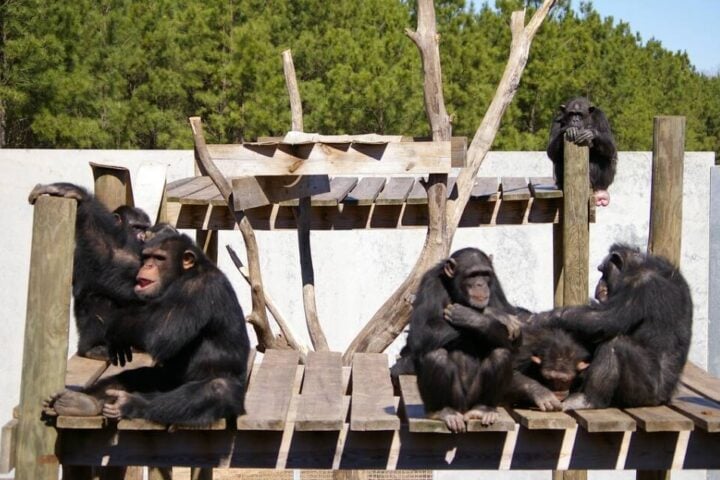


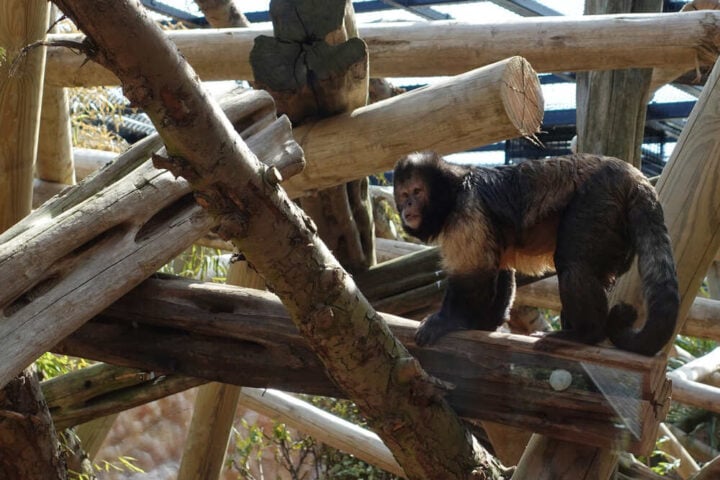

![Representative Image: European Starling [49/366]. Photo Source: Tim Sackton (CC BY-SA 2.0)](https://www.karmactive.com/wp-content/uploads/2025/04/Starlings-Drop-82-in-UK-Gardens-as-Birdwatch-2025-Reveals-Record-Low-Count-Since-1979-720x480.jpg)

